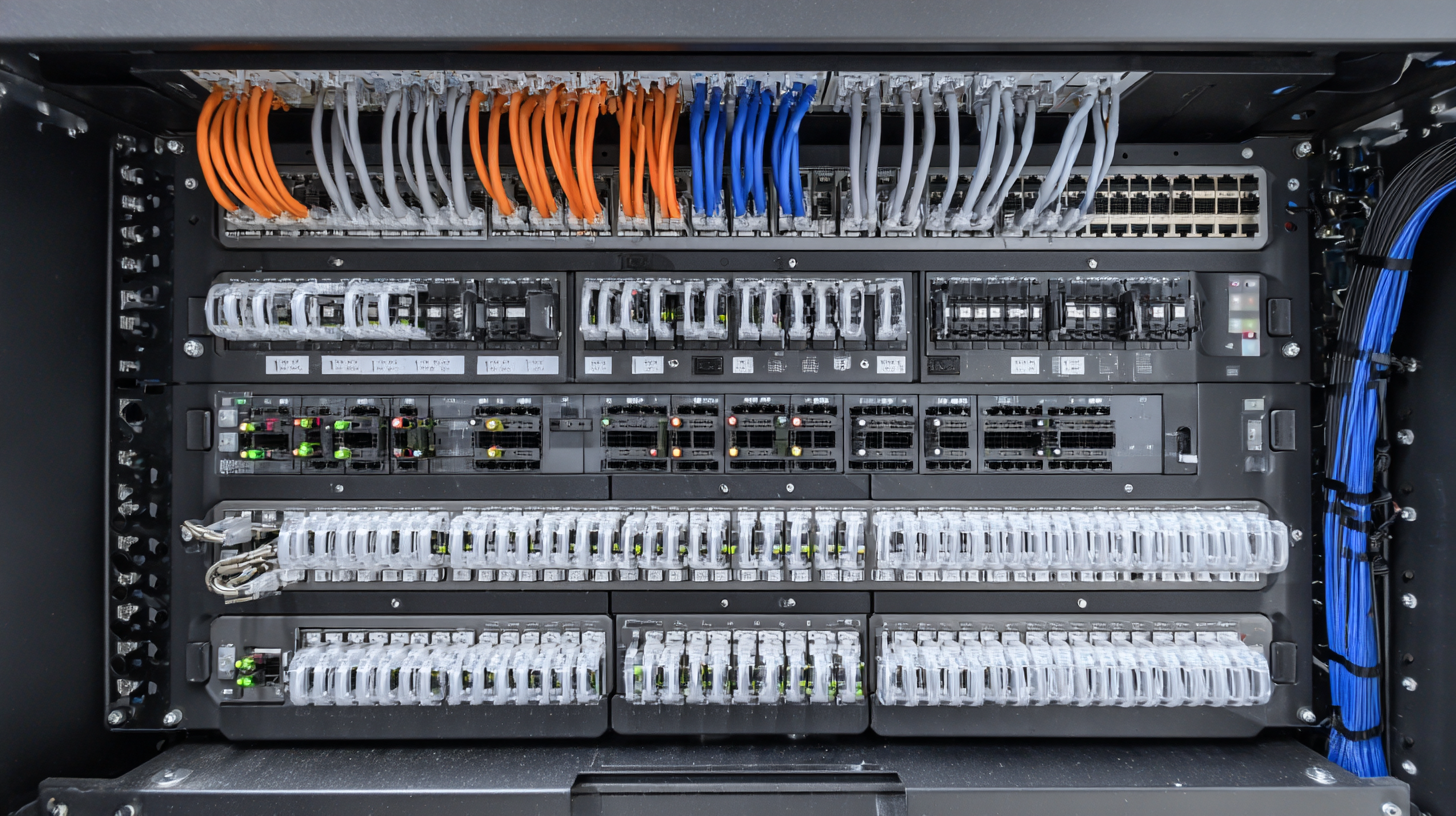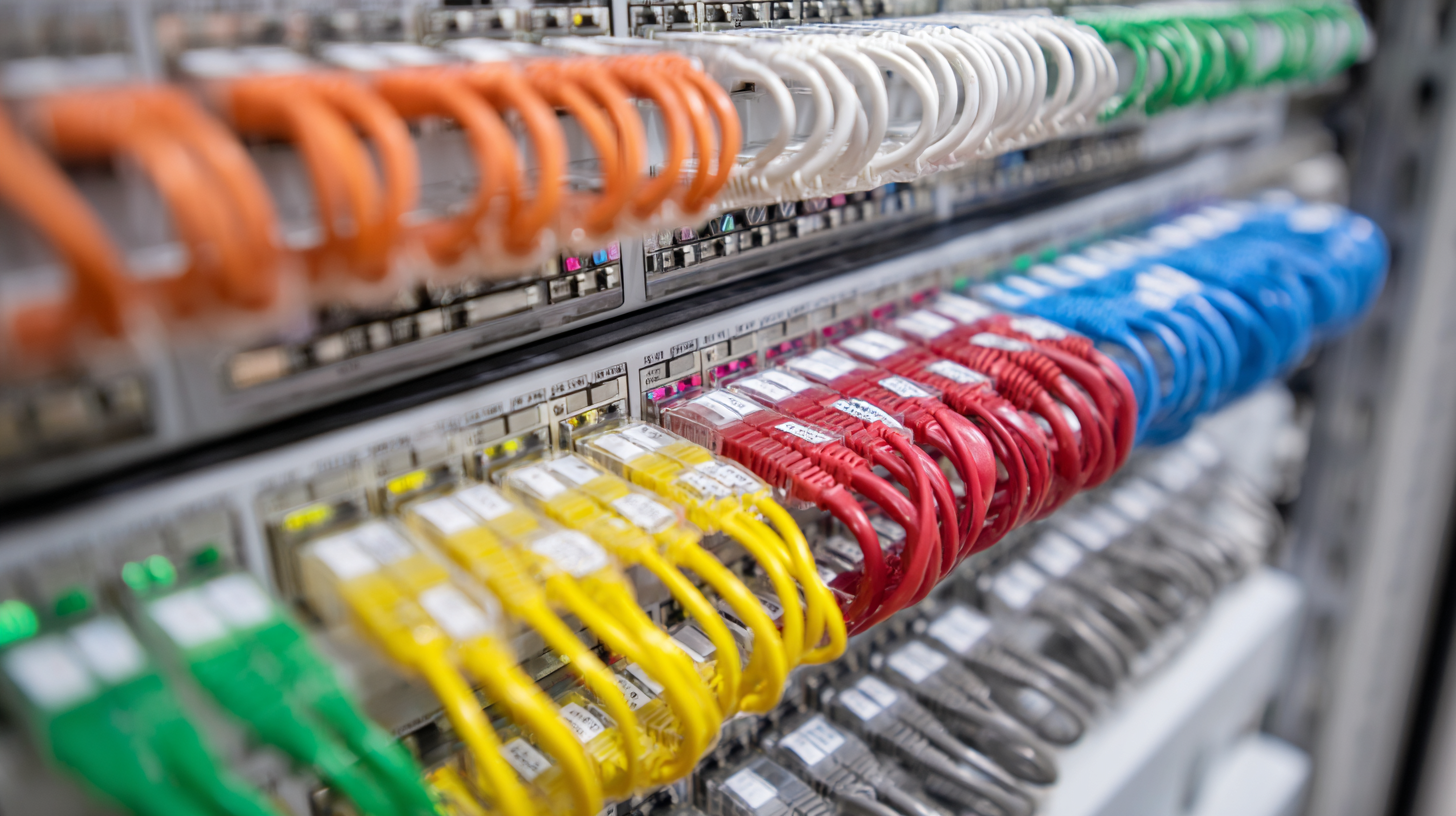Maximize Your Network Efficiency: Understanding the Role of Cat 6 Patch Panels in Modern Data Centers
In the rapidly evolving landscape of modern data centers, maximizing network efficiency has become a critical focus for businesses seeking optimal performance and reliability. One key component in achieving this goal is the implementation of a Cat 6 patch panel. These versatile and innovative devices play a crucial role in organizing cable management, reducing clutter, and ensuring high-speed data transmission for various applications. By supporting the enhanced performance of Cat 6 cabling, patch panels not only facilitate easier troubleshooting and maintenance but also contribute to reduced signal interference and improved connectivity. In this article, we will explore the essential features of Cat 6 patch panels, their advantages in modern data infrastructures, and best practices for optimizing their use, ultimately demonstrating how these tools can significantly enhance the overall efficiency of networking systems in data centers.

Understanding Cat 6 Patch Panels: Definition and Importance in Data Centers
Cat 6 patch panels are essential components in modern data centers, providing a structured way to manage and connect network cables. Defined as intermediary hardware, these panels facilitate the organization of Cat 6 cables, which are capable of supporting network speeds up to 10 Gbps over distances of up to 55 meters. According to a 2022 report by MarketsandMarkets, the global data center market is expected to reach $1040 billion by 2026, emphasizing the growing importance of efficient network infrastructure and the pivotal role patch panels play within it.
An efficiently organized patch panel setup can drastically reduce network latency and improve overall performance. By consolidating the network connections into a centralized panel, data centers can easily manage and reroute connections, which is crucial for maintaining performance during peak traffic times. Furthermore, studies show that a well-structured cabling system can reduce troubleshooting time by up to 50%, thus directly impacting operational efficiency.
**Tips:** When setting up Cat 6 patch panels, consider using color-coded cables to simplify cable management. Regularly label connections to ensure quick identification during maintenance. Additionally, invest in higher-quality patch panels with better shielding to improve signal integrity and reduce crosstalk, which can degrade network performance.
Key Benefits of Using Cat 6 Patch Panels to Enhance Network Performance
In today’s fast-paced digital environment, maximizing network efficiency has become paramount, particularly for modern data centers. Utilizing Cat 6 patch panels offers several key benefits that can significantly enhance network performance. These patch panels not only support higher data transfer speeds but also improve the overall organization of network cabling. By reducing clutter and ensuring optimal signal quality, Cat 6 patch panels facilitate easier troubleshooting and maintenance, which is essential for maintaining smooth operations.
**Tips:** When installing Cat 6 patch panels, ensure that proper cable management techniques are employed. This can include labeling cables clearly and avoiding tight bends to maintain signal integrity. Additionally, regularly reviewing and updating your network infrastructure can help identify any potential weaknesses that could hinder performance, ensuring that your data center remains competitive.
Furthermore, Cat 6 patch panels are designed to support advanced networking technologies, making them a smart investment for any data center looking to future-proof their systems. By integrating these patch panels into your network architecture, you are not only improving current performance but also preparing for the growing demands of data transmission without compromising reliability.
Maximize Your Network Efficiency: Understanding the Role of Cat 6 Patch Panels in Modern Data Centers - Key Benefits of Using Cat 6 Patch Panels to Enhance Network Performance
| Feature | Description | Benefit |
|---|---|---|
| High Bandwidth | Supports up to 10 Gbps data rates over short distances. | Enables faster data transfers, reducing bottlenecks. |
| Improved Crosstalk Performance | Designed to minimize interference between adjacent cables. | Ensures clearer signals and better overall performance. |
| Flexible Installation | Can be mounted in various orientations and configurations. | Adapts easily to different data center layouts. |
| Scalability | Supports the addition of more connections as the network grows. | Facilitates easy upgrades without major disruptions. |
| Cost-Effective | Offers a balance of performance and affordability. | Reduces overall network infrastructure costs. |
Installation Best Practices for Cat 6 Patch Panels in Modern Environments
 The installation of Cat 6 patch panels in modern data centers is crucial for optimizing network efficiency. Proper installation practices not only ensure seamless connectivity but also improve the overall performance of the network. One key aspect is the careful management of cable organization within the patch panel, which reduces clutter and minimizes the potential for signal interference. Utilizing color-coded cables and labels can enhance visibility and simplify troubleshooting processes, making it easier for IT staff to maintain the system.
The installation of Cat 6 patch panels in modern data centers is crucial for optimizing network efficiency. Proper installation practices not only ensure seamless connectivity but also improve the overall performance of the network. One key aspect is the careful management of cable organization within the patch panel, which reduces clutter and minimizes the potential for signal interference. Utilizing color-coded cables and labels can enhance visibility and simplify troubleshooting processes, making it easier for IT staff to maintain the system.
Additionally, considering the layout of the data center is essential for effective installation. Adequate spacing between patch panels allows for proper airflow, which helps maintain optimal temperatures and reduces the risk of overheating. The integration of advanced cable management systems can further streamline the setup, providing a clean and organized environment that not only boosts operational efficiency but also aligns with modern best practices in IT infrastructure management. As organizations continue to prioritize sustainability, incorporating energy-efficient solutions when deploying these systems will also contribute positively to the overall environmental impact of data centers.
Troubleshooting Common Issues with Cat 6 Patch Panels for Optimal Efficiency
In modern data centers, Cat 6 patch panels play a pivotal role in ensuring efficient network management and connectivity. However, even the most advanced patch panels can encounter common issues that may impede performance. According to a recent report by ResearchAndMarkets, over 30% of network downtime can be attributed to improperly configured patch panels. This emphasizes the necessity for data center operators to grasp the troubleshooting techniques for maintaining optimal efficiency.
One prevalent issue with Cat 6 patch panels arises from improper cable management. Incorrectly routed or excessively bundled cables can lead to signal interference, reducing the bandwidth capabilities of the network. The Telecommunications Industry Association (TIA) advises that maintaining a minimum bend radius of cables and avoiding tight loops can significantly enhance data integrity and performance. Regular inspections can help identify and rectify tangled or damaged cables before they escalate into larger problems.
Another common concern is insufficient labeling of ports, which can lead to connectivity errors and increased resolution time during troubleshooting. A study from the International Association of Telecommunications and Electronics (IATE) suggests that implementing a systematic labeling strategy can decrease troubleshooting time by up to 40%. Adopting best practices in troubleshooting Cat 6 patch panels is essential for maximizing network efficiency, ultimately supporting the ever-growing demands of modern data environments.

Future Trends: The Evolution of Patch Panels in Next-Generation Data Centers
As data centers evolve to accommodate the burgeoning demands of technology, the role of patch panels, particularly Cat 6 patch panels, is becoming increasingly vital. These components not only enhance network efficiency but also streamline connectivity in environments that are increasingly driven by edge computing, artificial intelligence, and advanced interconnection services. Emerging trends suggest that next-generation data centers will rely heavily on interconnectivity and speed, necessitating the use of more sophisticated patch panels to manage the intricate web of connections efficiently.
Looking toward the future, the evolution of patch panels is closely tied to broader technological shifts predicted for 2025 and beyond. As AI-driven infrastructures experience rapid growth, the functionality of patch panels will need to adapt, offering enhanced scalability and performance. Experts predict that these advancements will enable data centers to not only meet modern demands but also anticipate future challenges, ensuring that they remain competitive in an increasingly tech-driven landscape. The integration of AI and other key technologies will likely redefine the capabilities of patch panels, positioning them as essential components in the quest for optimized data center operations.
Related Posts
-

How to Choose the Right Patch Panel for Your Networking Needs
-

7 Best Patch Cable Options for Seamless Connectivity Solutions in 2023
-

Why Network Racks Are Essential for Your IT Infrastructure Efficiency
-

Innovative Solutions for Optimizing Enterprise Networking Efficiency
-

Ultimate Guide to Choosing the Right Network Patch Cable for Your Home Setup
-

How to Choose the Right Patch Panel for Your Networking Needs
